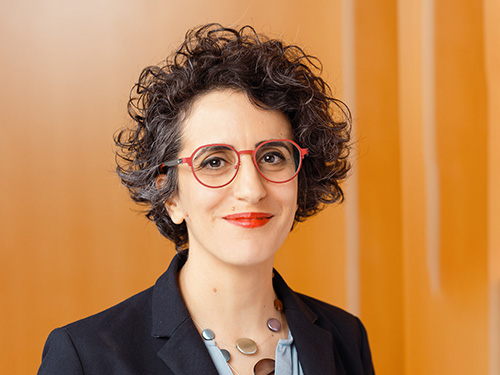Nada Lallous, Ph.D. – University of British Columbia

Please tell us about your background: where you grew up, studied, and why you chose the field you did.
I am from Lebanon and I did my B.Sc. in Biochemistry at the Lebanese University in Beirut. Then I moved to Strasbourg, France and I did a MSC and a Ph.D in Structural Biochemistry and Biophysics at the University of Strasbourg and The Institute of Genetics and Molecular and Cellular Biology (IGBMC). During my graduate studies, I worked on the structural characterization of UHRF1, an epigenetic reader crucial for silencing tumor-suppressor genes in various cancers. Subsequently, I did a post-doctoral fellowship at the National Cancer Research Centre (CNIO) in Madrid, investigating CAD, a pivotal protein in pyrimidine biosynthesis that is hijacked in cancer. Later, during my second post-doctoral tenure at the Vancouver Prostate Centre (VPC), I complemented my structural biochemistry background with cancer biology expertise. I studied the androgen receptor, the primary driver of prostate cancer, and demonstrated that inhibitors targeting a coregulatory binding site on the receptor effectively counter resistance linked to commonly employed treatments.
What does your current position entail? How does it tie into your previous experience, and where is it going?
I am currently an assistant professor at the University of British Columbia (UBC) and the head of the Gobind Khorana Protein Engineering Core at the Vancouver Prostate Centre. My research program focuses on studying transcriptional condensates and their in cancer progression and treatment resistance. We also aim to exploit these condensates as a new tool for drug discovery.
In what context did you first learn about light scattering and Wyatt Technology's instruments? How has your Wyatt instrumentation contributed to your research and development studies?
I was trained as a structural biochemist, and Dynamic Light Scattering (DLS) played a crucial role in assessing the quality of our protein samples before embarking on crystallization assays. During my post-doctoral fellowship at the National Cancer Research Center (CNIO), I utilized Size Exclusion Chromatography coupled with Multi-Angle Light Scattering (SEC-MALS) to identify the dimerization interface within a protein known as CAD. In our ongoing research efforts, we have recently acquired Multi-Angle Light Scattering (MALS) and Refractive Index (RI) detectors to enhance our ability to characterize the oligomeric state of various cancer-related targets. These instruments also serve as valuable tools for quality control checks on the protein samples produced as part of our efforts within the protein engineering core.

Wyatt instruments have been invaluable in our research, aiding us in assessing protein quality, characterizing oligomeric states, and identifying critical molecular interactions.
